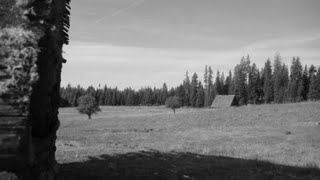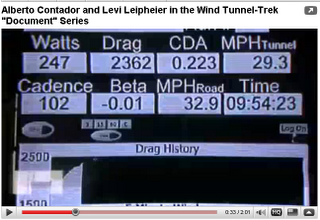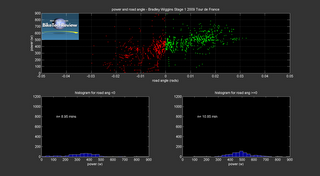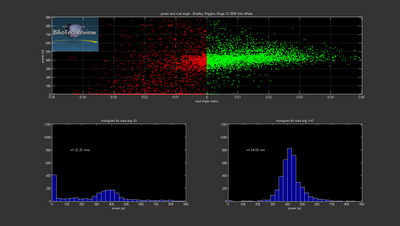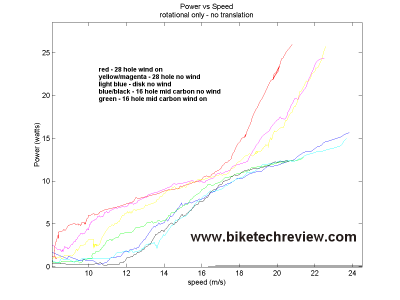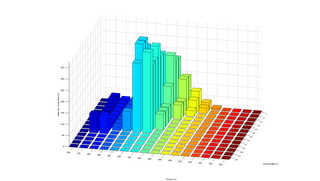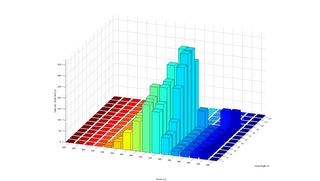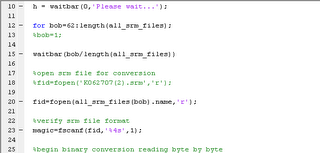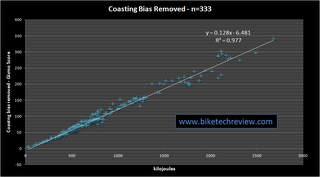I'm not sure how to spell "love" in french - it's Amor in spanish, and Amore in Italian, that much I'm sure of, and so, well, I reckon it's probably close to "amour" in french...
Anyway, after watching today's ITT in the tour, I'm pretty amazed at how much of the peloton is demonstrating behaviors symptomatic of the "disease of lowness". By that, I mean all the guys who wind up riding the tip of the saddle, only to shift themselves back on the saddle every 5 pedal strokes (I don't know what was more painful - how Contador felt during the ITT or how I felt while watching the DVR'd coverage a few minutes ago). The funny thing, for me, after seeing first hand how reach and drop interact in a wind tunnel with a wide cross section of athletes (from elites like Kristin Armstrong, Sarah Hammer, Phinney, Hincapie, Astarloza, Leipheimer, Popovych, Danielson, Marchante, Simoni, Millar, Sanchez, etc.. etc... to masters National champions like Ruth Clemence, or Alpenrose kilo record holders like BTR member Snigelmannen - way to take the record from Marty Nothstein! - to IM folks like Sindballe, Evans, Andersson, Fuhr, Ferguson, Major - to chubby, amateur, wannabe time trialists/IM'rs named Kraig) is that this disease has a cure...
The cure is simple, and it's called raising the bars in order to decrease the drop. huh? I mean, everyone knows that if you want to be aerodynamic, you have to have lots of drop, reach be damned, eh?
The favorite refrain from the "prophets of low" is: "move the saddle forward" or "get steep" isn't it:
http://www.biketechreview.com/performance/faster.htmMove the saddle forward and drop the bars "a little", or get "steep" is the magic elixir for the sickness of being too low, according to the pundits. Well, yeah, that seems like kind of an indirect way of solving the "bars are too low" issue, eh?
The fact of the matter is that from an aerodynamic perspective there exists a relationship between reach and drop for each individual, it's not an either/or deal...and despite what the interweb forums are full of, the UCI really isn't limiting things in the "forward" department based on my experience.
I'll use myself as an example of the "disease of lowness" - the last time I tested my TT/IM position in the wind tunnel was just a week or so after my IMAZ effort last november. During that test, I baselined my position, then looked at how reach and drop interacted. At three different bar heights, it became clear that if I "tipped it" (riding the nose of the saddle, rather than sitting on the saddle square), I was less aerodynamic than if I wasn't "tipping it"...and despite lowering the bars (more than "a little") the most aerodynamic overall position came at the highest bar height I was able to achieve - this bar height was probably a couple cm higher (or more) than the position I used for IMAZ.
These tunnel data suggest that if I were to take the advice of the "prophets of steep and low", (i.e - you just need to "move the saddle forward, and maybe drop the bars a little") well, I would be less aerodynamic and, therefore, slower. Thanks for the blanket, mantra-driven advice, but I think I'll pass, and let the beta/yaw equal to and not equal to zero data speak.
So, yeah, I can't really be bothered by all the "get low shenanigans" or "get low theatrics" the pro peloton seems to be brewing up these days. The wind tunnel here in san diego is the medicine that cured me of my own personal "disease of lowness". Keep in mind that I'm not alone with the uniqueness of how my reach/drop interact. Others demonstrate this same unique trade-off (some are listed above) of reach and drop from an aerodynamic perspective.
If one takes a "forest driven" rather than a "tree-driven" approach or process to TT setups, one just might realize that there exists a real opportunity to explore how much power one can produce (or wants to/chooses to produce in the case of IM) for the duration of their intended effort as a function of different reach/drop combinations.
I mean, if one can raise their bars, extend their effective reach, be more comfortable, be more powerful, and have the same (or better aerodynamics), well then, that sounds like a pretty good deal to me.
In the end, I'm pretty much enamored with "fast" and am not burdened by "the disease of lowness" anymore.
Kind of along these lines, I'm pretty sure LANCE demonstrated today, that once again, it's not about the bike...it's really about the floppy, un-aerodynamic jewelry hanging from your neck!!! ;-)
(and yeah, I think LANCE needs to raise his bars back to where they used to be four years ago... ;-) )
Labels: aerodynamics, LANCE, power, Process, TDF, TT Position, Wind Tunnel




